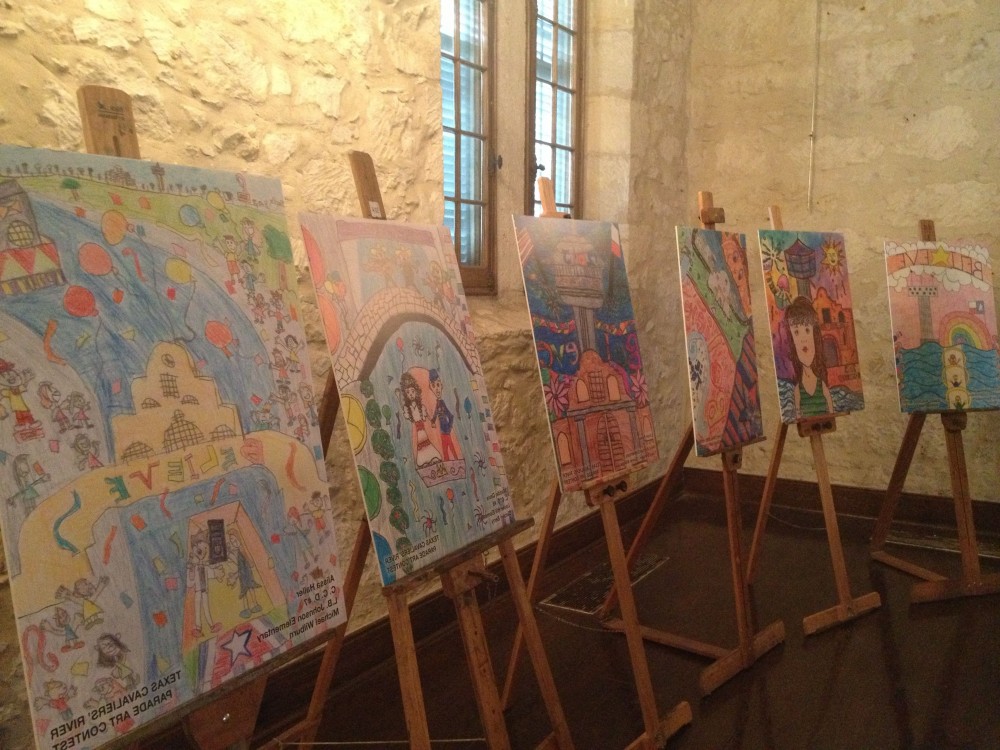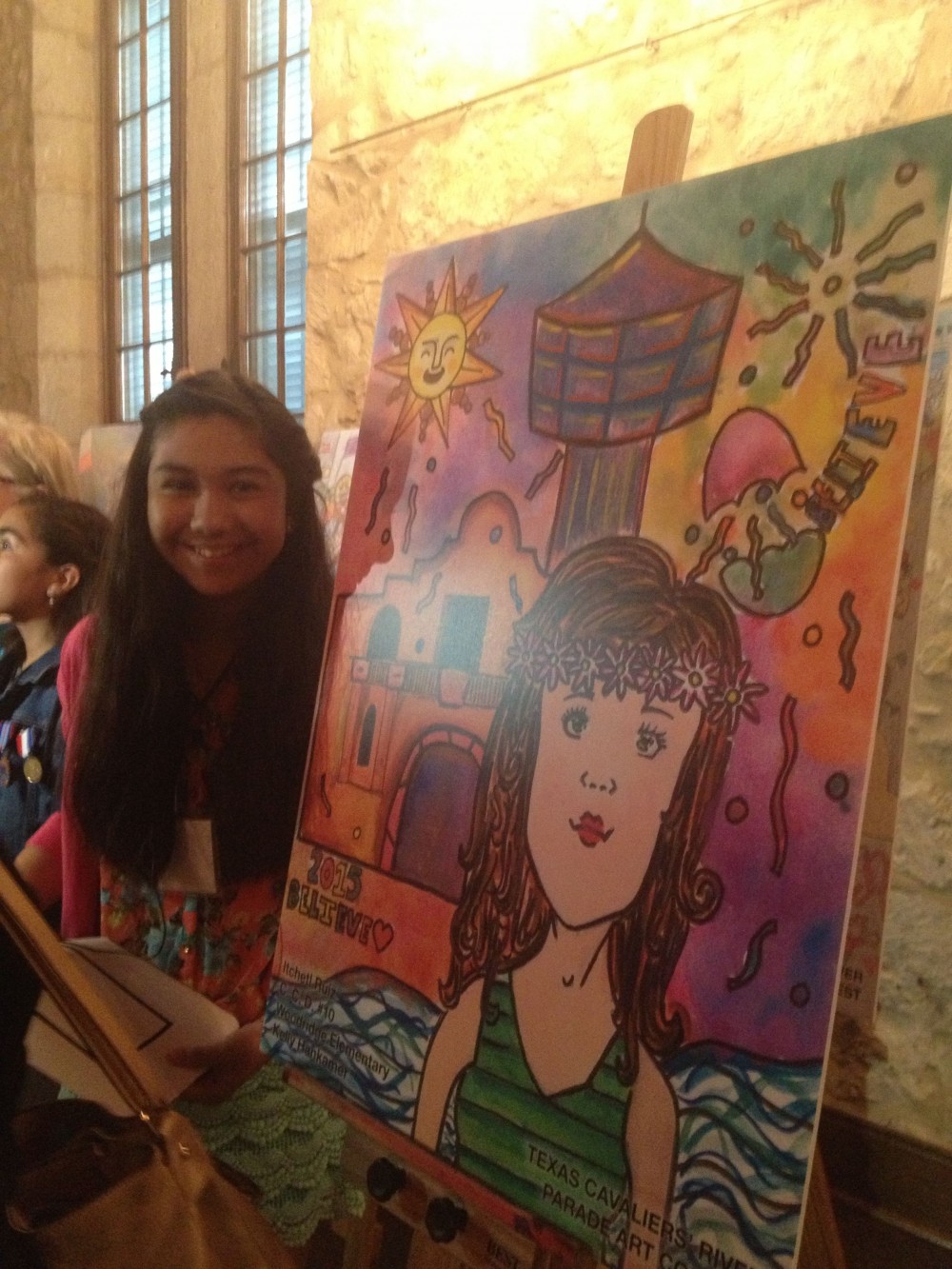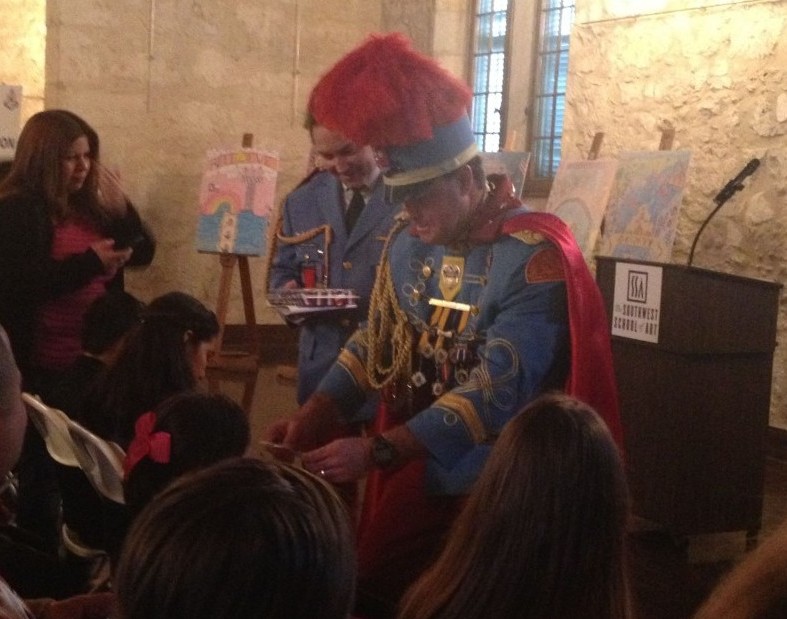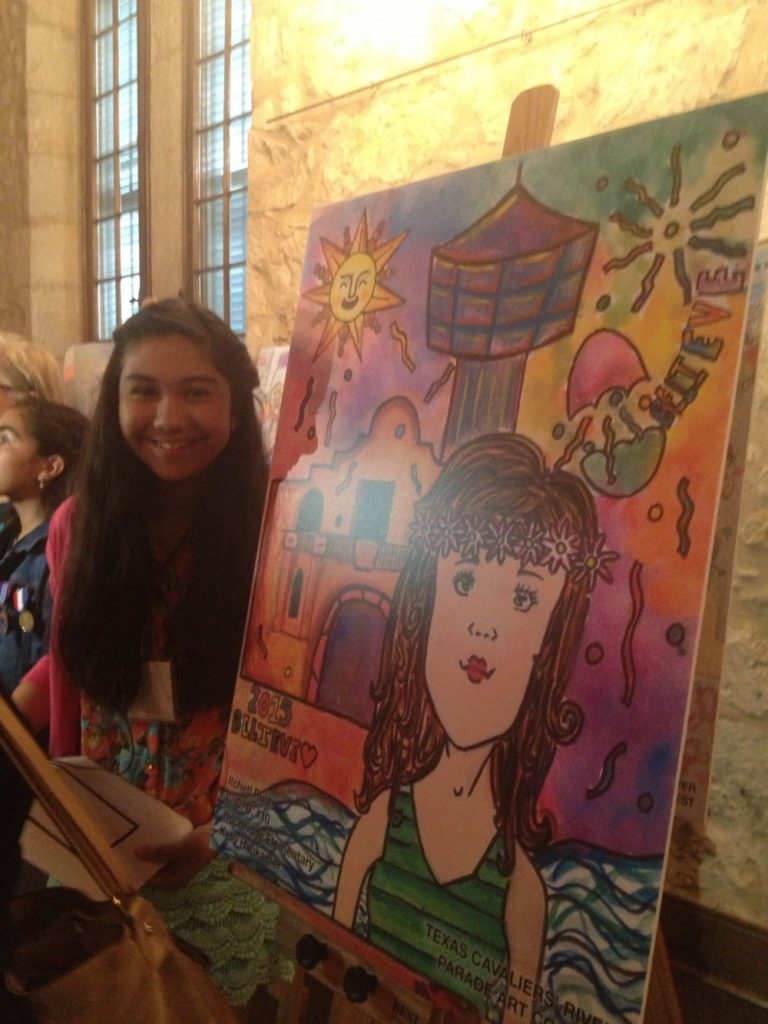
The Contest invites elementary school (grades 1-5) students citywide to submit their depiction of the River Parade and its theme. The 2015 Parade theme is “Believe” and was chosen as a message of hope for the disadvantaged children of our community. Proceeds from every River Parade are donated to dozens of area children’s charities and are expected to total more than $450,000 this year.
This morning the Texas Cavaliers announced the winners of the 2015 River Parade Student Art Contest, which came with a total of over $60,000 in awards for the art programs at the winners’ schools. Yes, you read that right. $60,000! For arts education! This is a huge moment for celebration in our city.
The grand prize winner was Itchetl Ruiz from District 10, winning $10,000 for the arts program at Woodridge Elementary. Arianna Apolinar from District 6 won second prize, taking home $5,000 for Northwest Crossing.
The great increase in prize money this year has allowed the Cavaliers to award each finalist with $3,000 for his/her respective school’s art programs. In addition, 11 district runner-ups were chosen and awarded $1,500 for each of their school’s art programs. That’s amazing!

Itchetl Ruiz from District 10 won the Grand Prize, winning $10,000 for the arts program at Woodridge Elementary.
SA2020 knows that the arts are fundamental to our community. We know this because you told us. In 2010, Arts and Culture was selected by the community as Cause Area in the SA2020 vision, and it’s consistently one of the most-chosen causes by volunteers on our website.
We also know arts are important because research tells us. Numerous studies have shown that arts education leads to better grades and higher test scores, higher rates of college enrollment, and even that students who have access to arts in high school are three times more likely to earn a bachelor’s degree. That’s a serious impact.
In addition to improving the education outcomes of our future workforce, the arts have other major impacts on our community. The arts employ thousands and increase economic activity through all the related industries that arts consumers spend money on (food, parking, hotels, retail, night life, etc, etc). Having a solid arts culture in our community also attracts highly skilled workers and high-value companies to locate here, boosting our local workforce and opportunities.

Molly Cox, SA2020 Interim President and CEO, congratulating the finalists of the River Parade Student Art Contest on their awesome work.
Young adults with in-depth arts involvement are also more likely to volunteer and vote at a higher rate than their peers with low arts involvement.
And on top of all that, learning how to think creatively is essential for our students and our society to thrive into the future. Our social and economic world is constantly evolving and innovating, which is what led to the creation of SA2020 in the first place. With our sights on a bold future, we need inventive and forward-thinking people who are encouraged to seek new ideas and ways to improve the world.
Arts education is a fundamental element to teaching our students to think inventively, and we could not be more excited to hear that local groups like the Texas Cavaliers are focusing their time and philanthropy on moving the needle in a big-picture way. In fact, that might be what’s most exciting to SA2020, that the Texas Cavaliers noticed a challenge — a lack of funding for arts education in schools — and created a solution. The Texas Cavaliers are a prime example of the kind of thinking that our city needs if we’re going to reach our SA2020 goals.

King Antonio, Mark M. Johnson, Jr. bestowing a prize to a winner of the Texas Cavaliers River Parade Student Art Contest.
And even if you aren’t a member of a group like the Texas Cavaliers, there are so many great ways to join in and support this piece of our community vision. You can volunteer with or donate to any of the arts organizations that are official SA2020 partners. You can attend events like theatrical productions, musical performances, art gallery openings, museum exhibits, and many more to show your support for the amazing work that’s happening throughout our community, and help it sustain and grow. Finding solutions to community challenges is everybody’s business, and those solutions can be as sweeping as a $60,000 donation, or as simple as buying a ticket to a local show. And that’s definitely cause to #celebratetheawesome.
References (in case you’re wondering):
- Gifts of the Muse: Reframing the Debate About the Benefits of the Arts, Kevin F. McCarthy | Elizabeth H. Ondaatje | Laura Zakaras | Arthur Brooks, Commissioned by the Rand Corporation (2004)
- PBS Parents Article, Grace Hwang Lynch, “The Importance of Art in Child Development”
- “The Arts and Achievement in At-Risk Youth; Findings from Four Longitudinal Studies”, National Endowment for the Arts (2012)

